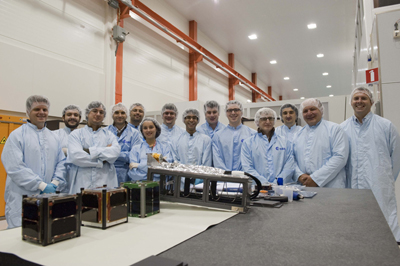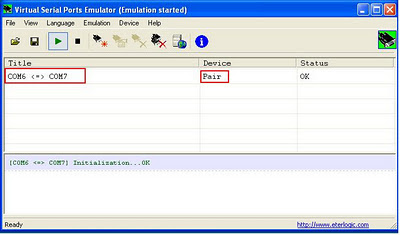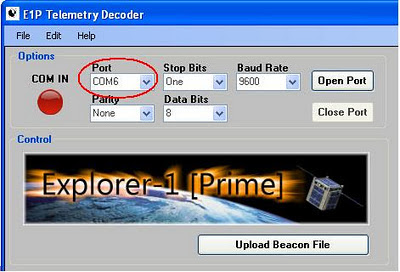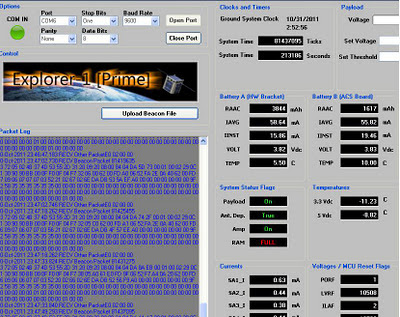
ESA - European Space Agency is standing by 9 CubeSats for the launch on 16 Jan 2012.
PW-Sat1 Warsaw University of Technology, Poland
Robusta University of Montpellier 2, France
SwissCube-2 Ecole Polytechnique Federale de Lausanne, Switzerland
XaTcobeo a collaboration of the University of Vigo and INTA, Spain
UNICubeSAT University of Rome, Italy
AtmoCube University of Trieste, Italy
e-st@r Politecnico di Torino, Italy
OUFTI-1 University of Liege, Belgium
Goliat University of Bucharest, Romania
---------------------------------------------------------------------------------------------
PW-Sat1
Warsaw University of Technology, Poland
Mode:
1. Receive only mode - no downlink
2. Beacon CW mode - Downlink On-Off Keying (OOK) CW (1kHz) 12 WPM on 435.020 MHz
3. Beacon BPSK mode - Downlink BPSK (3 kHz) 1200 bps AX25 (1 frame on 20 sec) on 435.020 MHz
4. Control communication mode. Downlink BPSK (3 kHz) 1200 bps AX25 on 435.020 MHz
5. Voice Repeater mode (aka "AO-16" mode) - Uplink 145.900MHz FM (15 kHz)
Downlink 435.020MHz DSB (3 kHz)
http://eng.pw.edu.pl/
http://tinyurl.com/CubeSatPW-Sat
http://www.uk.amsat.org/2011/10/21/pw-sat-to-launch-in-january/
PW-Sat1

---------------------------------------------------------------------------------------------
Robusta
Universite Montpellier 2, France
http://tinyurl.com/montpellier2
http://www.ies.univ-montp2.fr/robusta/satellite/?lang=en
Robusta Frequency
437.325MHz 1200bd FM telemetry with one data burst of 20 secs every 3 mins
PDF files
http://www.ies.univ-montp2.fr/robusta/satellite/IMG/pdf/EN_EA_2010.02.02-2.pdf
http://www.ies.univ-montp2.fr/robusta/satellite/IMG/pdf/EN_GN_2010.11._interface-anglaisV9.pdf
http://www.ies.univ-montp2.fr/robusta/satellite/IMG/pdf/Progress_Report_1_08.11.pdf
Robusta

---------------------------------------------------------------------------------------------
SwissCube-2
Ecole Polytechnique Federale de Lausanne, Switzerland
Frequency: 437.505MHz CW
http://swisscube.epfl.ch/
SwissCube-2

---------------------------------------------------------------------------------------------
XaTcobeo
Universidade de Vigo, Spain
FFSK with AX.25 on UHF, Simplex 437.365MHz
SSR downlink 145.940MHz
http://www.xatcobeo.com/cms/
XaTcobeo

---------------------------------------------------------------------------------------------
UNICubeSAT
University of Rome, Italy
437.345MHz 19k2 FSK
http://www.gaussteam.com/index.php?option=com_content&view=article&id=96&Itemid=183
http://mstl.atl.calpoly.edu/~bklofas/Presentations/DevelopersWorkshop2009/2_Science/3_Santonio-UNICubeSat.pdf
UNICubeSAT

---------------------------------------------------------------------------------------------
AtmoCube
University of Trieste, Italy
437.225MHz 9k6 FSK
http://wwwusers.ts.infn.it/~gregorio/AtmoCube/AtmoCube_proposal.pdf
http://www2.units.it/atmocube/theses/assetto_Ciani.pdf
AtmoCube

---------------------------------------------------------------------------------------------
e-st@r
Politecnico di Torino, Italy
437.445MHz 1k2 AFSK
http://areeweb.polito.it/ricerca/E-STAR/Documents/Cubesats_development_at_Politecnico_di_Torino.pdf
http://areeweb.polito.it/ricerca/E-STAR/Documents/ESTAR_iWAT.pdf
e-st@r

---------------------------------------------------------------------------------------------
OUFTI-1
University of Liege, Belgium
OUFTI-1 = D-STAR Repeater in space
Uplink 145MHz / downlink 435.015 and 435.045MHz
DV mode only (GMSK / 4800bps)
Dual adaptive on-board Doppler compensation
Up to 10 minutes of continuous D-STAR communication time
Slots for custom compensation to be requested on our website
http://www.bxe.uba.be/oufti.pdf
http://www.ltas-s3l.ulg.ac.be/cmsms/uploads/08-09_Beukelaers.pdf
OUFTI-1

---------------------------------------------------------------------------------------------
Goliat
University of Bucharest, Romania
437.485MHz 1k2 AFSK
http://www.unibuc.ro/en/
http://mstl.atl.calpoly.edu/~bklofas/Presentations/SummerWorkshop2008/Sun/1%20University%20of%20Bucharest.pdf
Goliat

Sourse de
JE9PEL / Mineo Wakita web Page
JE9PEL researched about ESA CubeSats website



















































